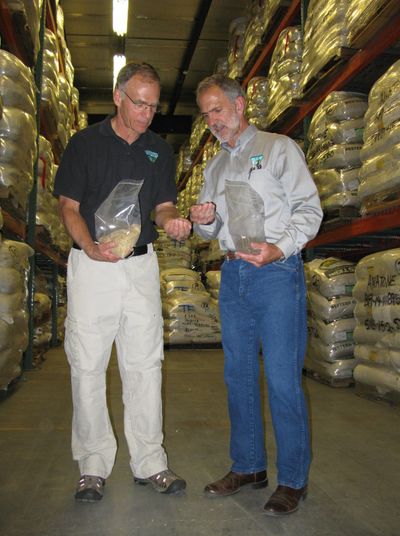Strategy to reseed burned land takes shape

BOISE – Even as fires ravage landscapes across the West, restoration crews already are on the ground amid the smoke, starting work on plans to reseed and rehabilitate the burned wildlands.
“There’s an urgent need,” said Tim Murphy, Idaho state director of the U.S. Bureau of Land Management.
That need has prompted an array of federal and state agencies to partner with hundreds of groups, including commercial seed producers, garden clubs, research universities and ranchers, to launch a new “National Seed Strategy for Rehabilitation and Restoration.” The effort is aimed at restoring burned landscapes across the West and making them more resilient.
“This is for the whole country,” said Steve Ellis, deputy director of the BLM in Washington, D.C. “It can be applied in areas where we have lost natural vegetation from hurricanes and other natural disasters.”
Ellis, who started his career as a forester in Idaho 36 years ago, flew over the giant Soda fire in Southern Idaho on Sunday with fire and land management officials. “The conversation in the aircraft immediately went to rehabilitation,” he said. “We want to get on the ground even before the smoke clears.”
But it’s not as simple as just replanting. Invasive species, like cheatgrass and medusa head, move in after fires and can choke out native plants. Scientists and seed producers are working on identifying just the right native seeds for the specific location, elevation and climate to plant in each location, and when the ideal window is for the native plants to grow instead of giving way to the invaders.
“We’ve oftentimes had shortages of certain types of seed,” Ellis said. “You really have a window to get that seed in the ground.”
The new strategy is aimed at coordinating a nationwide network of native seed collectors, farmers and growers, nurseries, seed storage facilities and restoration ecologists. Officials gathered at a giant BLM seed storage warehouse in Boise on Monday to announce the strategy; the warehouse has nearly 800,000 pounds of precisely targeted native seed stacked to the ceiling in huge bags, ready to send out to specific fire locations.
Risa DeMasi, chairwoman of the American Seed Trade Association and a seed grower from Oregon, said there are small, regional seed companies all over the nation that are producing specific seeds. They’re ready to help, even when faced with requests that often call for millions of pounds of diverse seed species on short notice.
The national strategy is aimed at providing “the right seed in the right place at the right time.”
Greg Mueller, chief scientist for the Chicago Botanic Garden, said the garden has researchers working to identify native seeds that can be “winners” in the competition with invasive species. It also is the key botanic garden for the BLM’s “Seeds of Success” seed collection program, whose collection now includes more than 14,000 native seeds.
Mueller said more than 300 organizations in 48 states are involved in the new seed strategy, “united by one thing, which is an interest in native plant conservation in the United States.” He called the new national strategy “a very ambitious initiative.”